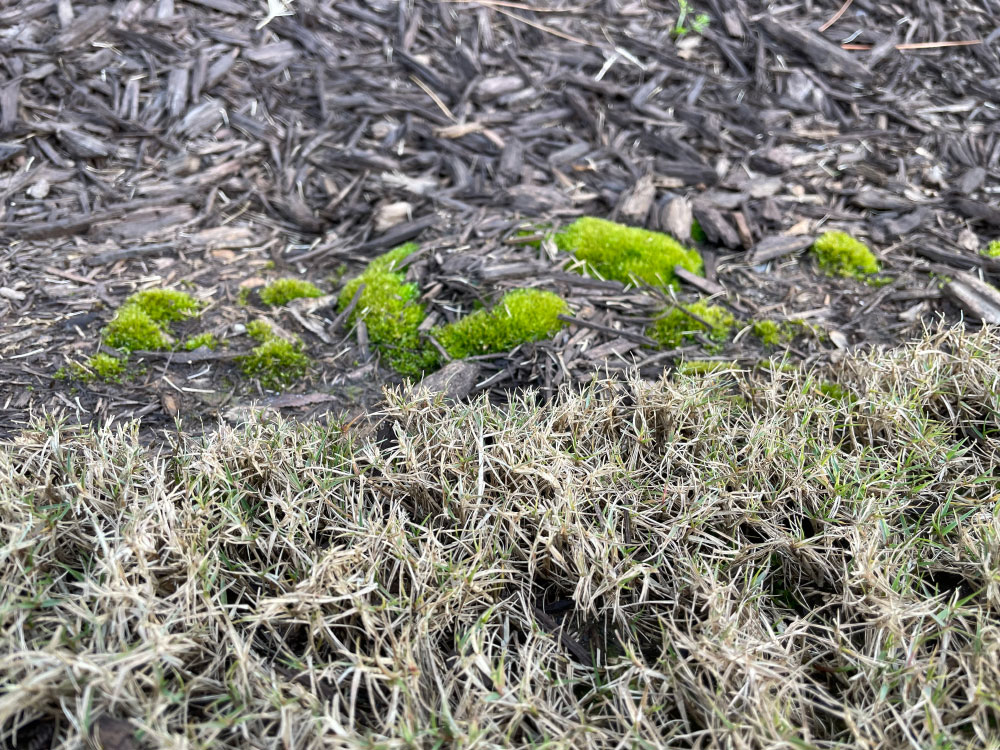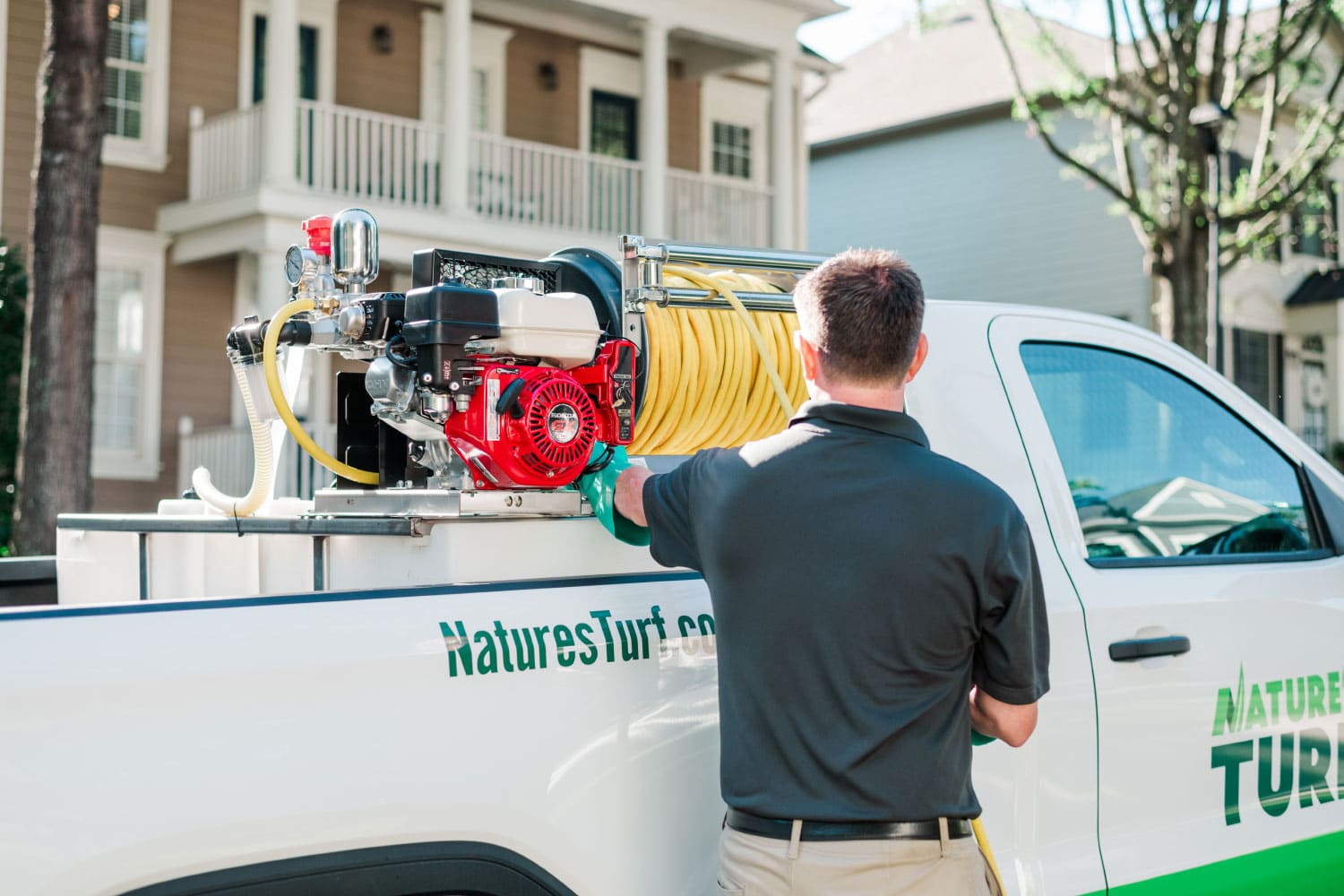It’s a nice, warm, mid-winter day in metro Atlanta. You’re out cleaning leaves and clearing debris when you notice a patch of green at the edge of your property where the grass is thin. As you approach the area, you realize that it isn’t weeds. Moss has begun forming where the turf is thin. What is moss, why is it in your lawn, and how do you get rid of it?
What Is Moss?

While moss is in the same kingdom as more developed plants, it is actually much simpler than the grasses, flowers, shrubs, and trees in your landscape. The key differences will not only help explain how and why moss is there, but also why typical post-emergent weed control products don’t hurt moss.
Moss lacks a strong root system. If you’ve ever seen a large fallen tree, you probably noticed the large mass of roots that pulled out of the ground with it. That’s often only a portion of the full root system. The thick roots near the base of the trunk continue to spread, reaching as wide or wider than the farthest stretching leaf, and can be as thin as hair. The complete root system is used for getting water and nutrients into the tree but also serves as the foundation for the massive, heavy structure as it reaches for the sky. Grasses, flowers, and shrubs also have similar roots; however, they are much smaller. Moss doesn’t have a root system like this. Instead, moss has threaded structures called rhizoids. While they look like roots, they often don’t have the ability to absorb water in the same way as roots, and they certainly aren’t big or strong enough to support a large plant.
Moss lacks a vascular system. The only way to remove that fallen tree is to cut it into smaller pieces. If you’ve ever seen a log cut from a tree, you know that there are wood rings in the middle, bark on the outside, and another band between them. These tissues, called vascular tissues, are how plants move water and nutrients up and the sugars made in the leaves back down to the roots. Again, your other plants have these as well, though on a smaller scale. Moss lacks these vascular tissues, also keeping them very small.
Moss Thrives Where Turf Struggles

Weeds, like our grasses, have the roots and vascular tissues we discussed above. When given ideal conditions, they can grow in our landscapes. Healthy turf slows weeds down but requires pre-emergent weed control products for maximal suppression.
Moss can’t invade areas where turf is healthy and dense. Instead, moss only grows in these opportunities:
- the turf is thin
- the area is relatively shady
- there is enough moisture to sustain them.
Shady, wet, compacted areas with low pH and poor nutrition will result in thin turf and promote moss growth. Correcting these issues and promoting healthy grass will discourage moss from regrowth, but how do you get rid of existing moss?
How to Get Rid of Moss
Our pre- and post-emergent weed control products are feats of modern chemical engineering. It may seem like they kill weeds on contact, but these products are actually absorbed and used in different ways that result in the removal or total suppression of the pest.
As discussed above, moss doesn’t have many of the fundamental tissues that weeds have. It also doesn’t undergo many of the same processes. It’s these processes that weed control products target. This means these products are often ineffective in the control of moss.
Oftentimes, the best way to remove moss is by physical or mechanical means. Pulling, raking, or scraping easily takes care of moss. This is normally a simple accessory to the processes of correcting the environmental conditions challenging turf health. The best defense against moss is a good offense. Choosing the right turf type and optimizing the conditions for that turf will result in an environment that doesn’t favor moss.
Important Takeaways
- Moss is a primitive organism, lacking the normal roots and vascular tissues more developed plants like grasses, flowers, shrubs, and trees have.
- Moss thrives where grasses struggle, preferring conditions that make for thin lawns. Moss takes advantage of those thin, damp, shady areas.
- Moss doesn’t undergo many of the processes that pre- and post-emergent weed control products target. That means moss isn’t controlled by them.
- The best defense is a good offense. Mechanical removal, correction of the issues resulting in thinness, and establishment of a healthy turf will stop moss from forming.








